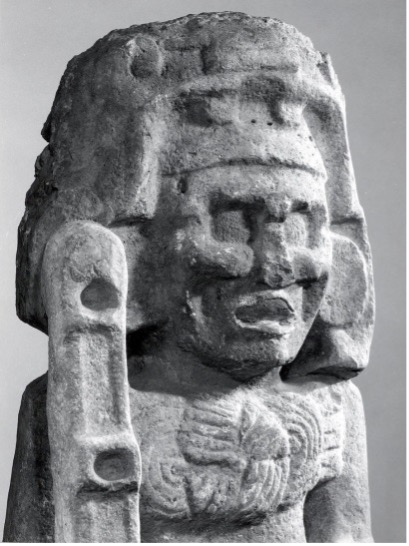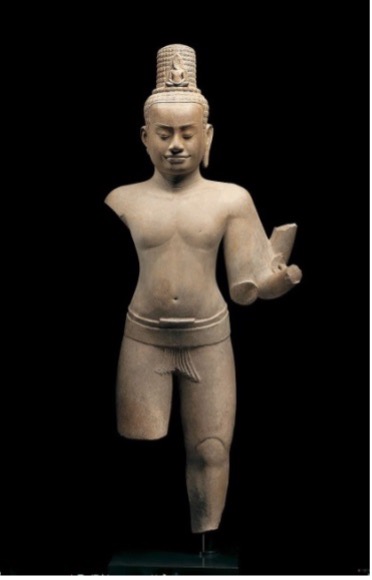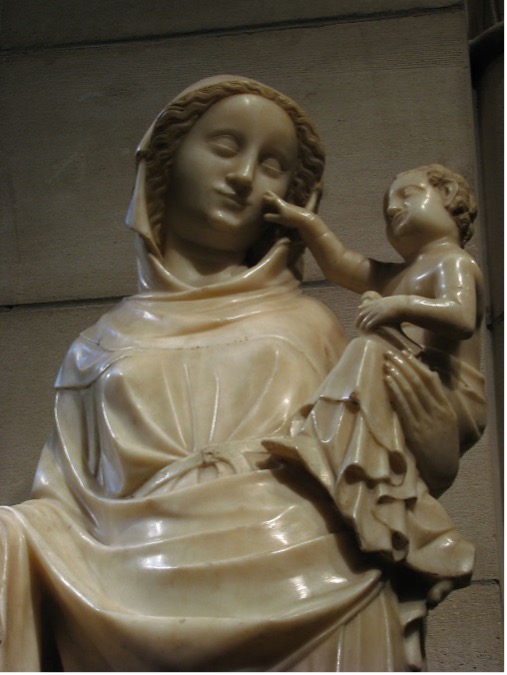Crossroads
As soon as I saw the title Crossroads, I knew this was an exhibit I had to see. We are at so many “crossroads” now: locally, nationally, internationally – in providing healthcare, aid, protection, political, social, and moral actions – in sorting out who we are and how we relate to each other and our world and how we save our planet – in discovering and rediscovering our resources, our ethics, our values, our responsibilities. Roads are perpetually crossing. Which way or ways do we turn?
When I also saw one prime focus of the exhibition, currently at the Metropolitan Museum of Art in New York, was “Piety and Power,” I thought about all of us who are so enmeshed in the piety/power struggle within our Church. Intersections have been and will be always before us. Which way do we turn? Maybe a tour of past major intersections of culture and religion might yield some insight. After all, the introductory panel described Crossroads as a “global history of humankind as a narrative of intersections and exchange.” The “Piety and Power” section stated its artwork “projected concepts of rule and community, visualized ways of thinking about the holy, and served as sacred gifts.” All of this seemed promising.
Dominating the center of “Piety and Power” were four gigantic sculptures, all dating from the Middle Ages but all four from different areas of the world. Most prominent was the enormous head of the emperor, Constantine the Great, sculpted at the zenith of his power. Notice, below, his eyes, how they look upward. The sculptor made the Emperor’s message clear: Constantine has direct access to God; he, and only he, has the divine right, the spiritual authority to rule the world. Piety has been effectively used to justify and reinforce power and domination.

Maya deity Chahk is the supreme god of tropical rain. I included a picture of only the head, but the whole sculpture was monumental, which is the way Mayan rulers wanted their subjects to see this formidable god when they located him in a prominent position on their own royal grounds. Once again, through the art they commissioned, they, like Constantine, proclaimed their authority as divinely ordained and thus unequivocal and indisputable. And this god certainly is powerful, not only imposing but fierce; lest anyone doubt the might he embodies and, thus, bestows upon the male leaders, he wields an axe (missing its blades). Force, domination, doom to all transgressors are his weapons, all sanctioned by his godhood.

Seemingly a milder version of combined piety and power, the Standing Eight-Armed Avalokiteshvara, the Bodhisattva of Infinite Compassion sculpture promised a relief from its more arrogant companions. Bodhisattvas are on the path to becoming Buddha, seeking awakening, acquiring wisdom, compassion, and powers along the way, sometimes becoming “savior deities” using their compassion to assist ordinary beings. Despite the promise of this designation, however, this Khmer sculpture also represented piety used for power’s purposes. The figure below had been sculpted to resemble a living royal. The caption enlightens: “While the body depicts a Buddhist savior, the face is thought to be a portrait of the Khmer ruler of twelfth-century Cambodia.”

With these three, I had been impressed by the art but discouraged by the insights. Cultural and commercial crossroads’ experiences and exchanges had not seemed to expand minds and hearts, but served only to encourage male rulers in their use of piety for their own self-aggrandizing and imperial purposes. I did not need a Middle Ages perspective to tell me what I already saw today perpetuated in my own Church. From the Middle Ages to today, still so much same old, same old. Whichever road we take for the future, I thought, it’s going to be a long one and, for women and other genders, a lonely one.
But there was one more sculpture on this central platform, Virgin and Child, dated 1300. This one had been commissioned, not by male rulers, but by the Beguines, a community of Christian women in the Netherlands. The sentiment the statue conveyed was especially appropriate for these women. As the caption underneath told us: “The Beguines lived communally but worked in cities, where they assisted bereaved families with funerary rites and cared for the poor and sick.”

You can see Mary looking lovingly at Jesus who is wiping a tear from her face. The power is in piety that yields compassion. The power is in the tenderness Mary receives from, and bestows upon, Jesus. Although full of sentiment, the image is not sentimental nor cloying. It is relational; we immediately connect with true power and true piety. We do not need to be dominated or terrified or cajoled into subservience to superiors touting their divine authority. We can instead look and understand and respond to each other of our own free choice, and that is how we transform the world.
Or so I hope. Even though someone carved that statue in the 14th century and not much transformation led or inspired by women or other genders has happened in our autocratic Church, so much has happened everywhere else. The world’s peoples have listened and responded to the richly diversified wise and compassionate among us—maybe not enough—but possibly more and more if we keep intersecting without ignoring, reducing, or branding.
Whomever we meet at crossroads will influence us and be influenced by us. The powerful and pious male and the powerful and pious Church were once supposed to be that influence, but at history’s crossroads, they were able to see only the facsimiles of themselves. Those days are over. We are sculpting new visions and inclusive versions of the sacred every day. And be forewarned… or encouraged…we have been and will be taking them on the road.
Hope to see you at all the multitudinous intersections.

3 Responses
Ellie, now I will have an image for Constantine, who did so much to “reform” the early Jesus movement into a hierarchical church. I suppose the image is not as militant as the Mayan, but we know he was a military leader. I love the peace suggested by the other images; their action was compassion. I really appreciate your sharing these with us.
The forthcoming 2021-2023 synodal process is a crossroad. What could be done to foster discernment about the ordination of women?
Love this, Ellie! Thanks.